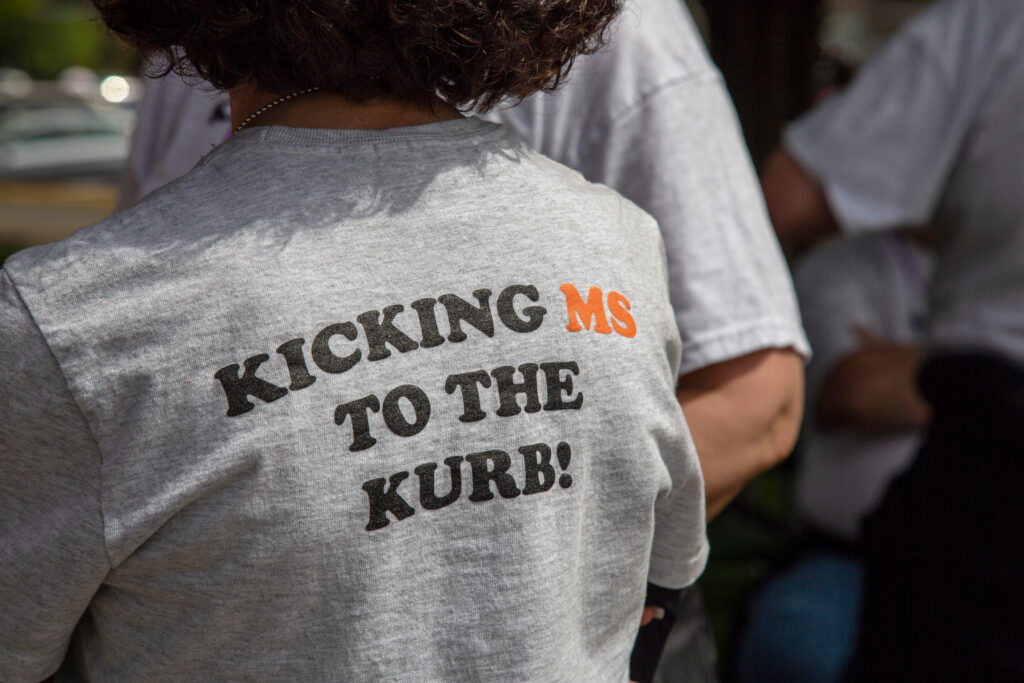InSight+ journalist Becca Whitehead takes a personal look at the current state of multiple sclerosis treatment and research for World Multiple Sclerosis Day.
May 30 is World Multiple Sclerosis (MS) Day. With more than 33 300 Australians living with MS, and diagnoses increasing by 30% in Australia and around the world, how close are we to a cure for MS?
I’m a journalist with the MJA and InSight+, and I also have MS. I spoke with Dr Julia Morahan, Head of Research at MS Australia about what’s changed in MS treatment, and what’s ahead.
What does a cure even look like?
MS is a chronic neurological condition, an autoimmune disease in which the body’s own immune system mistakenly attacks the myelin sheath (a fatty substance that surrounds and protects the nerves like conduit surrounds electrical wires). When myelin is attacked, the nerves are affected. Symptoms include pain, lack of physical function, fatigue, and neurological issues such as altered decision making and mood.
“The word ‘cure’ is an interesting one,” said Dr Morahan. “When you have one tablet for your relapses, and another to repair your brain – and that second tablet doesn’t exist yet – and you take them every day for the rest of your life? That’s lifelong management. It’s not a cure,” said Dr Morahan.
Dr Morahan looks at three aspects of “cure”: disease progression, damage repair, and prevention.
“When I talk to people living with MS, they want to never to have to think about MS again,” she said.

As Dr Morahan explains, medical advances for relapsing forms of MS (symptoms come and go) and progressive forms of MS (the disease gets worse over time) are at very different stages.
“We have a lot of great, effective therapies for relapsing forms of MS,” said Dr Morahan. “Twenty years ago, we only had injectable therapies that were about 30–40% effective at suppressing MS. Because of research that’s happened in the last ten years, we’ve got tablets, infusions, and the efficacy is in the 70–90% range.”
“We’re not as good at treating the progressive forms of MS. We’re not so good at the repair component,” said Dr Morahan.
MS Australia has joined an global research group whose aim is to find strategies for treating progressive MS.
Monoclonal antibody infusion: getting down to the cellular level
New infusion therapies are the “rock stars” in MS treatment, and have changed the lives of people with relapsing forms of MS.
In monoclonal antibody therapy, antibodies are cloned in a laboratory to target specific cells identified as contributing to a particular disease, and can be infused into the body. In MS, for example, monoclonal antibodies have been developed to only target the CD20 marker found on the surface of B cells, a type of white blood cell thought to be involved in the immune system’s attacks on myelin.
“Infusion therapy has changed the game,” said Dr Morahan. “And there are other [therapies] in the pipeline that will hopefully just get better and better,” she said.
Stopping MS before it begins
Dr Morahan is most excited about the prevention space, and what we know about genetic and environmental contributors to MS, including a landmark genetics article that showed over 200 genetic changes that contributed to the risk of developing MS, and research uncovering some of the environmental factors, including ultraviolet light exposure, smoking, and prior Epstein–Barr virus infection, among others.
“What we’re very good at in Australia is genetic and environmental risk factors for developing MS,” said Dr Morahan, who also refers to the strength of MSBase, an international longitudinal MS registry, managed in Australia.
“Prevention is the next frontier in MS research. I think Australia will be one of the major players in that space and has been for the last 30 years,” said Dr Morahan.
Living with MS
I was diagnosed with relapsing remitting MS 12 years ago. In hindsight, my symptoms (optic neuritis), age (30 years) and gender (three out of four people with MS are women) were pretty clear, but my ophthalmologist suggested a magnetic resonance imaging (MRI) scan “would be overkill”. But I was concerned, so I got the MRI. It showed lesions on my brain. I was diagnosed the next week.
My first medication was fingolimod, a daily capsule. In those years, I grew six new lesions on my brain. My neurologist (an amazing doctor and support) started me on ocrelizumab (a monoclonal antibody infusion) as soon as it was available. At my most recent appointment, six years after starting the mew medication, he took off his glasses and leant forward.
“This medication works for you like a clamp. You’ve had no new lesions.”
I’m lucky – I have the closest thing to a cure that exists. I still struggle with debilitating fatigue and mood symptoms.
But I grew up doing the MS Readathon. I know that medical science and organisations such as MS Australia were there for me before I knew I would need them. And I know they’ll continue to be there.
Subscribe to the free InSight+ weekly newsletter here. It is available to all readers, not just registered medical practitioners.

 more_vert
more_vert
Thank you for a concise helpful update.
It is indeed encouraging to learn of new MS therapies that are providing measureable gains.
MS Society a treasure of suport